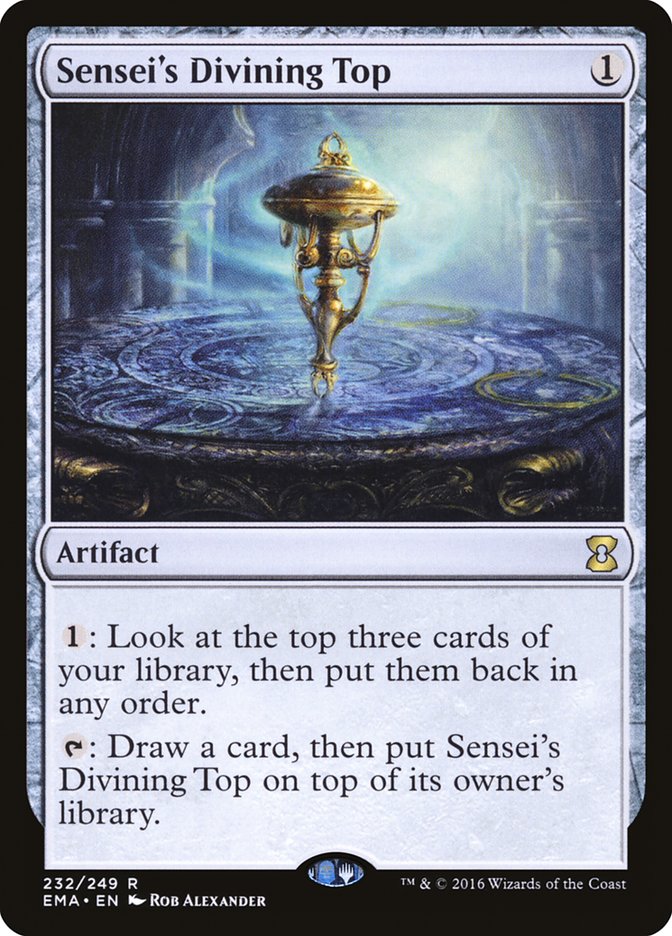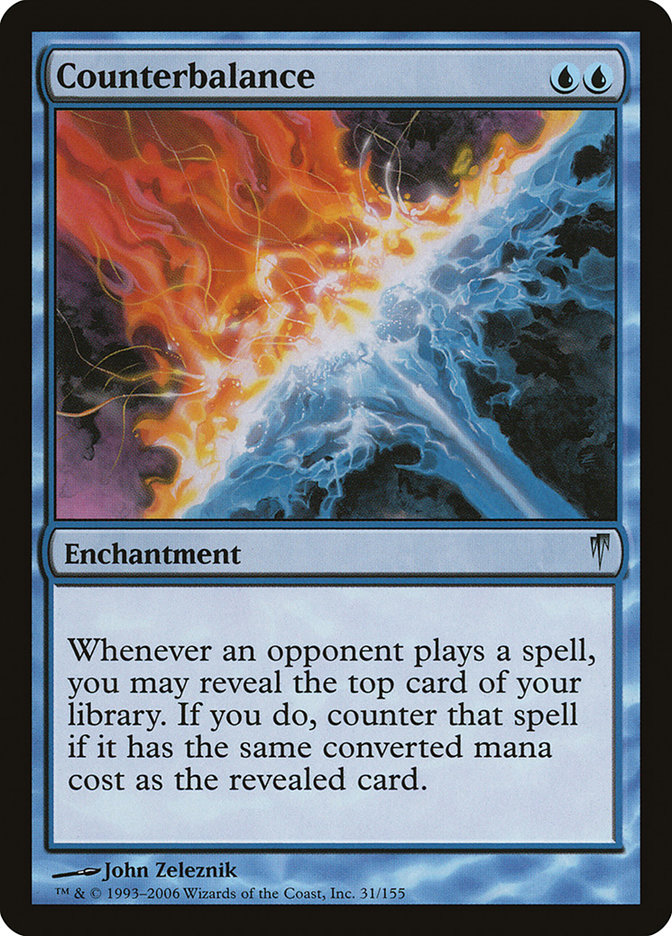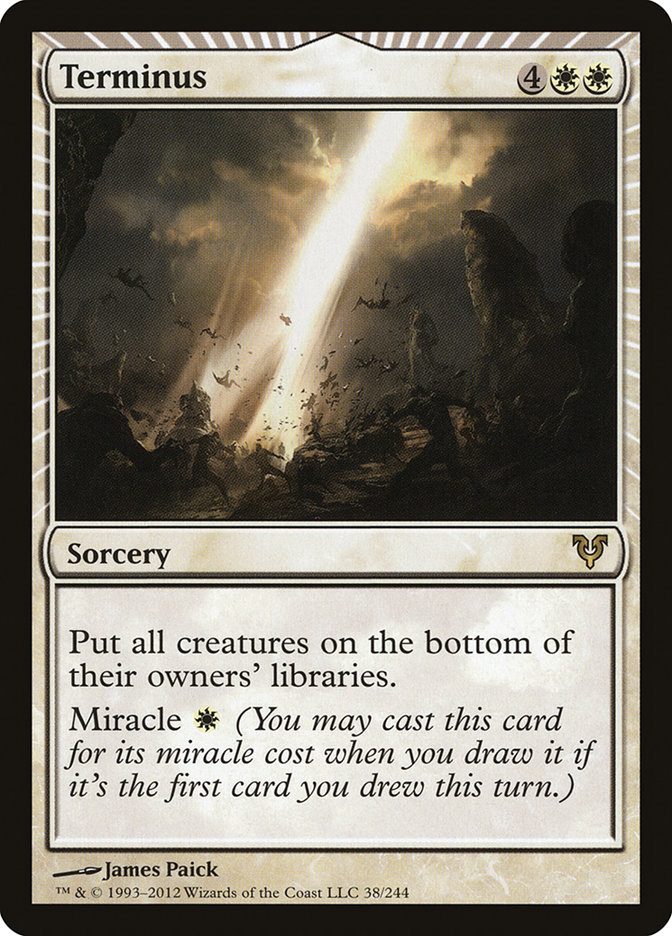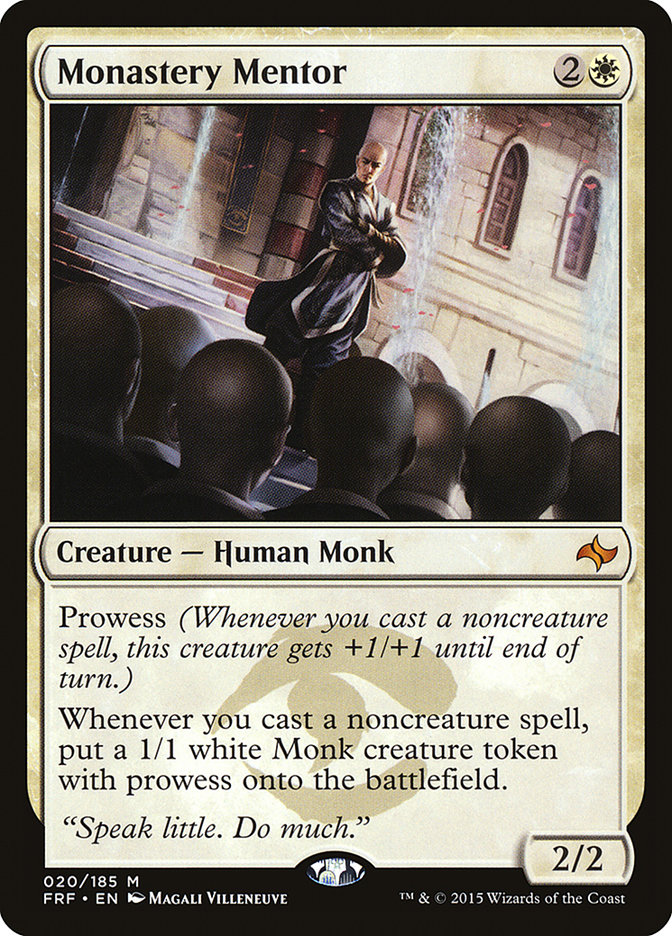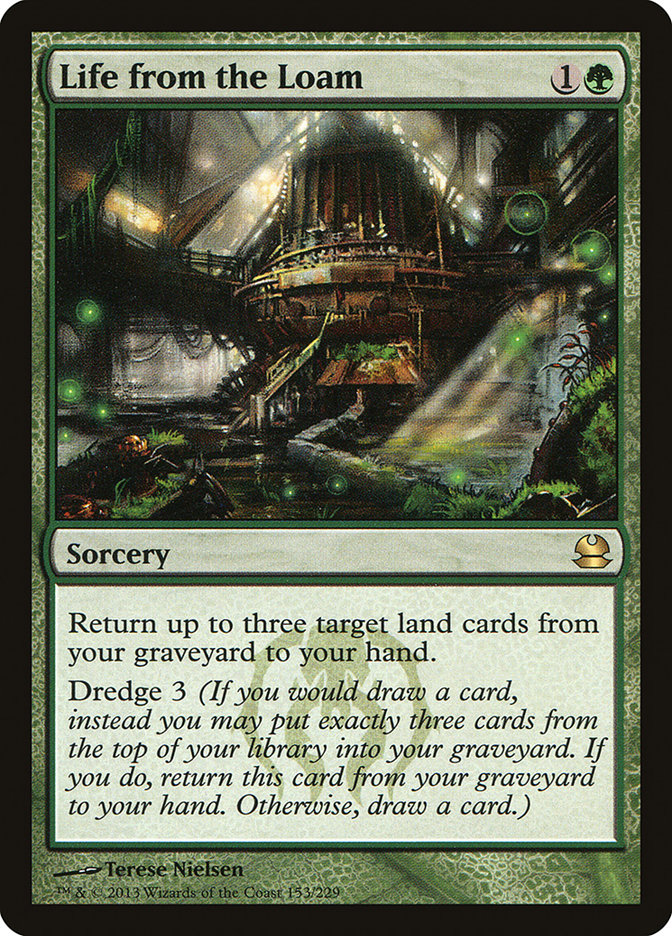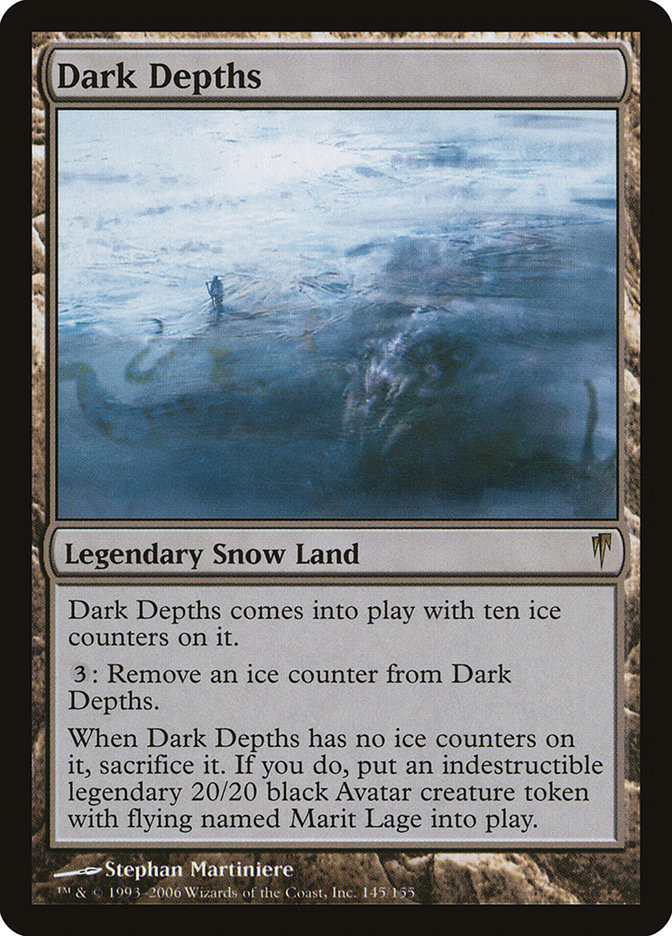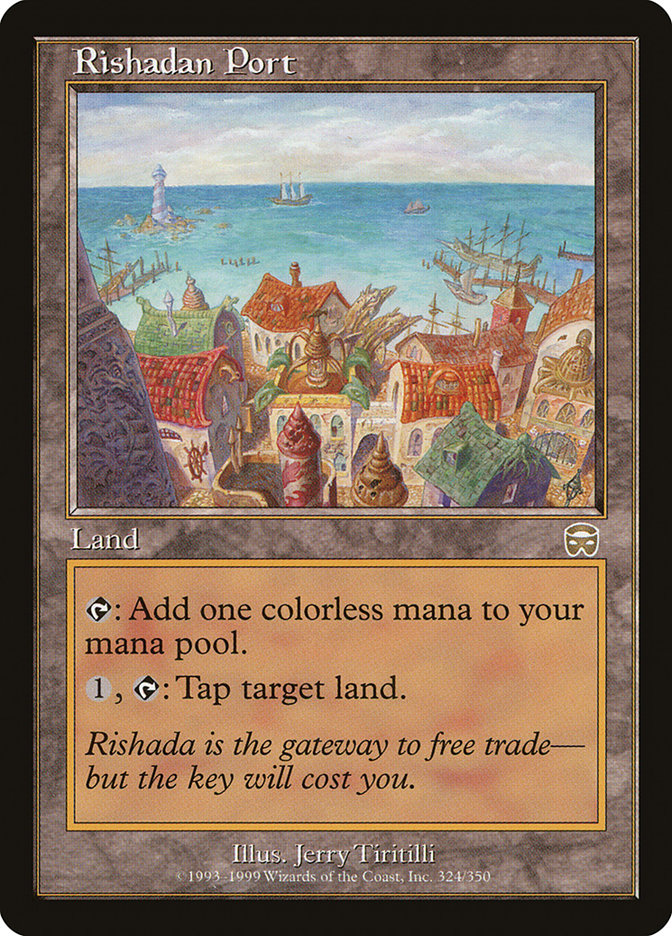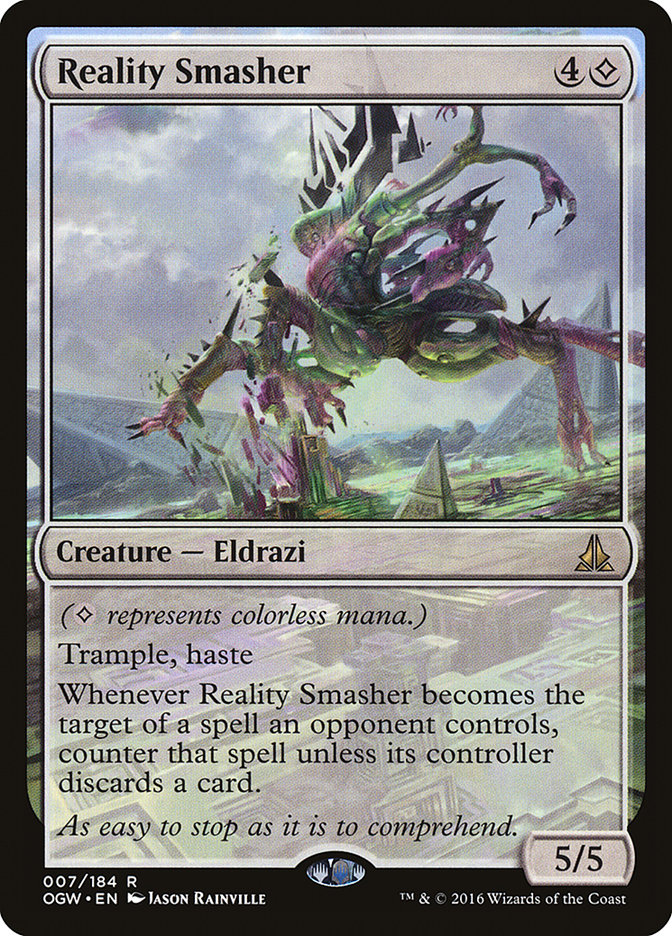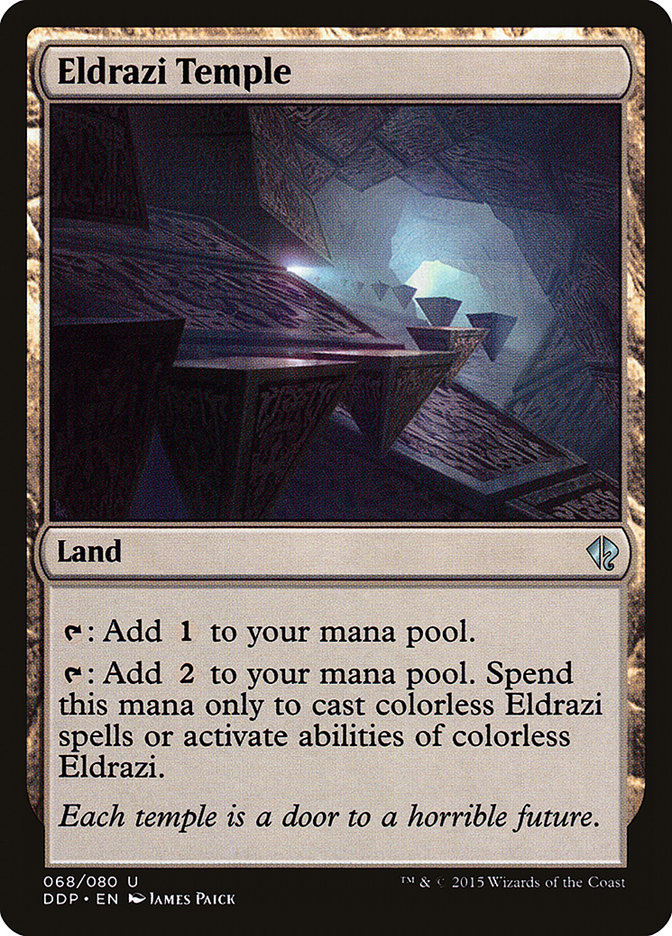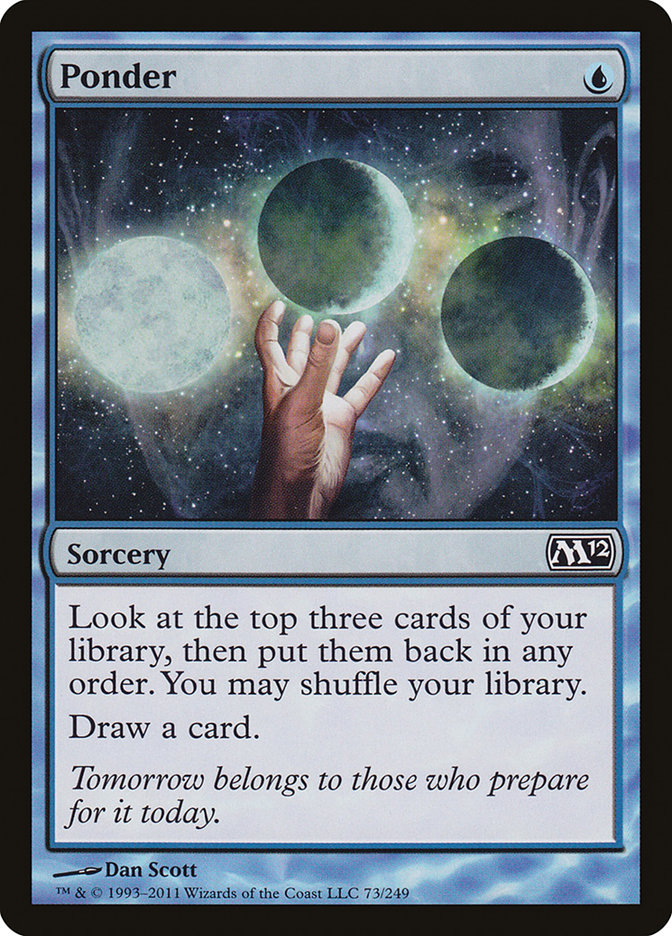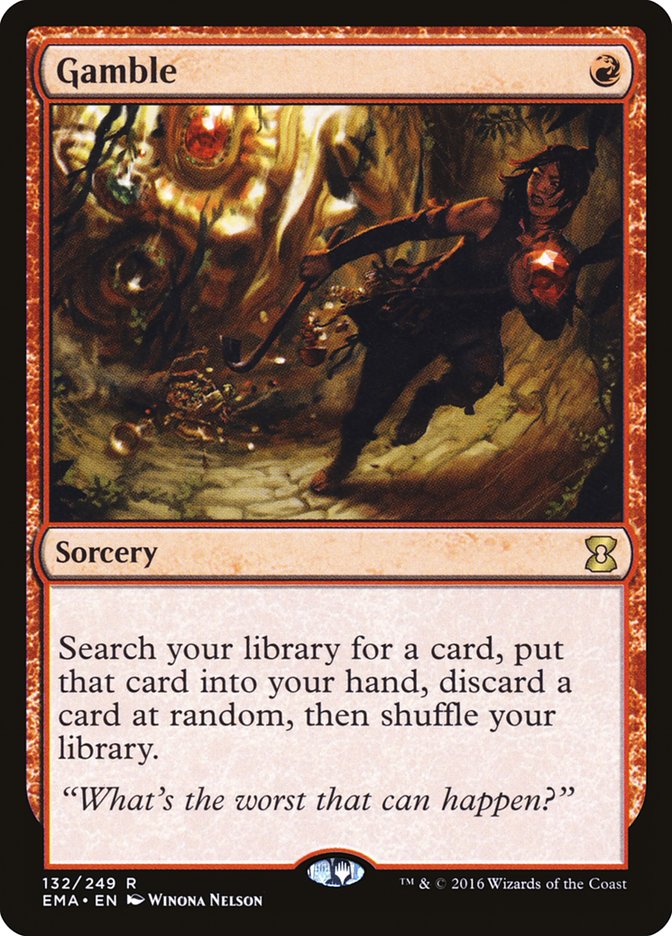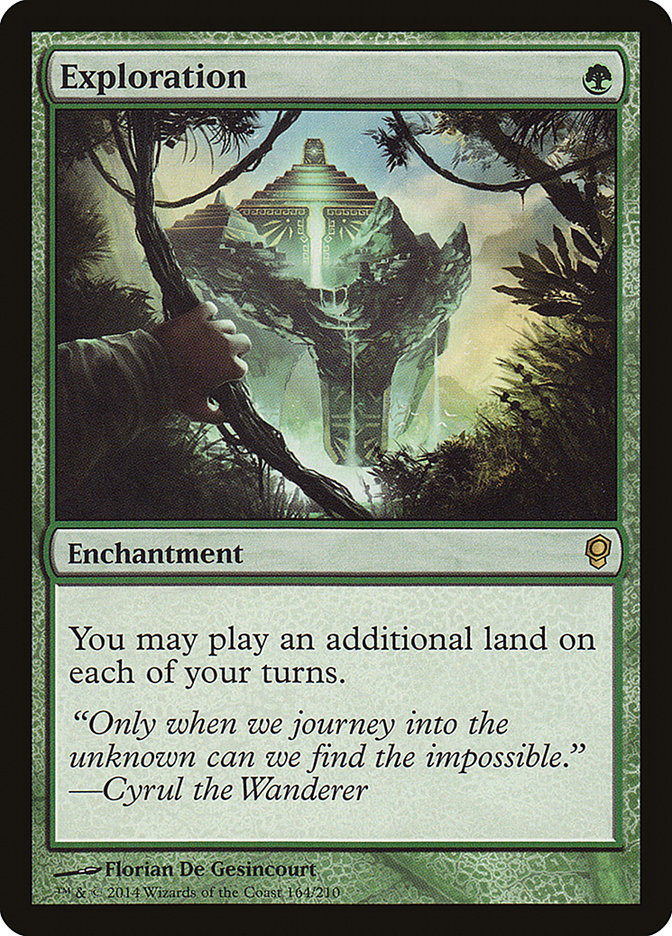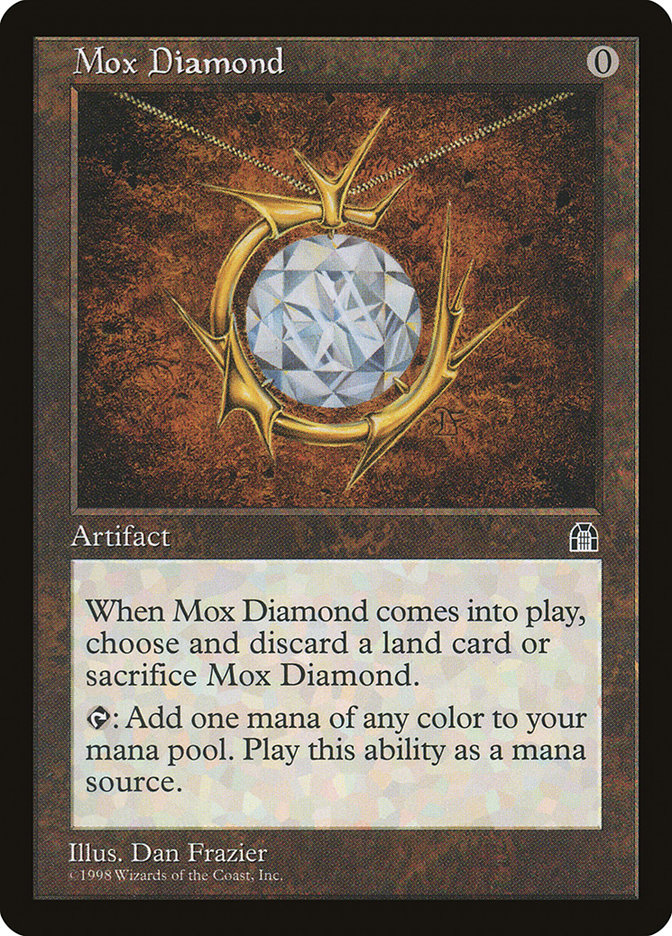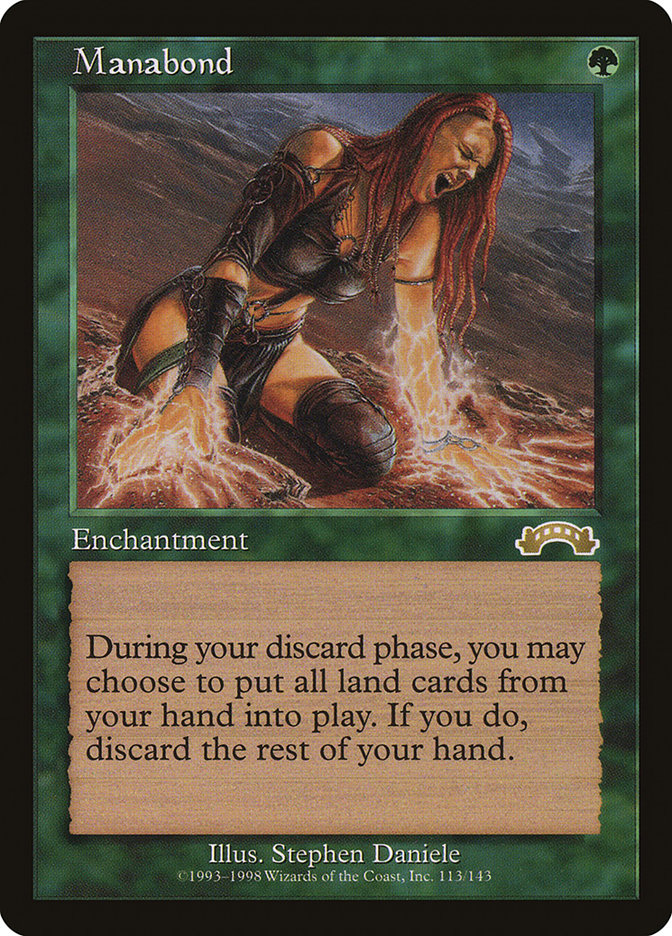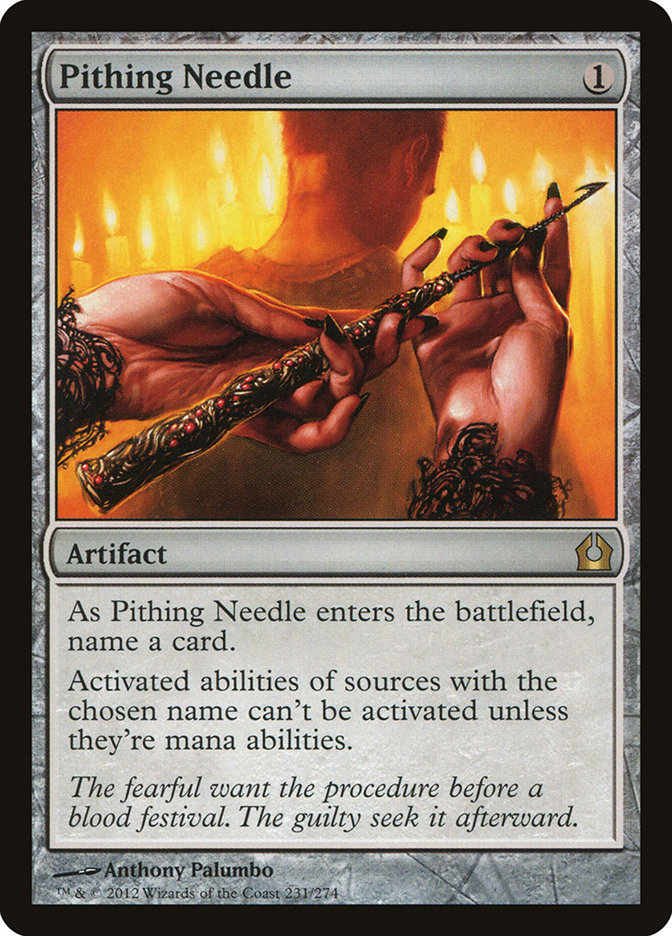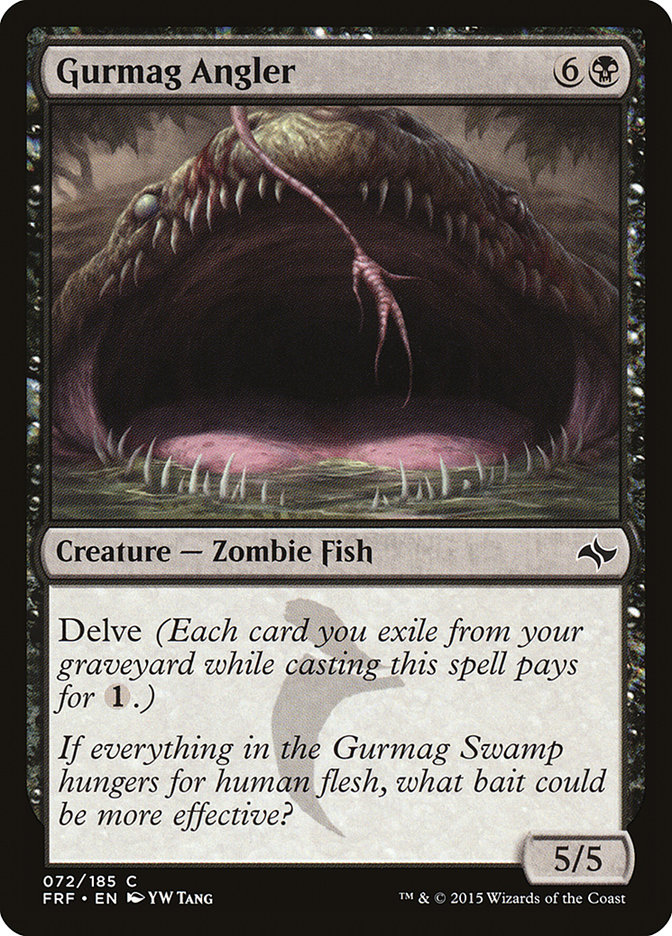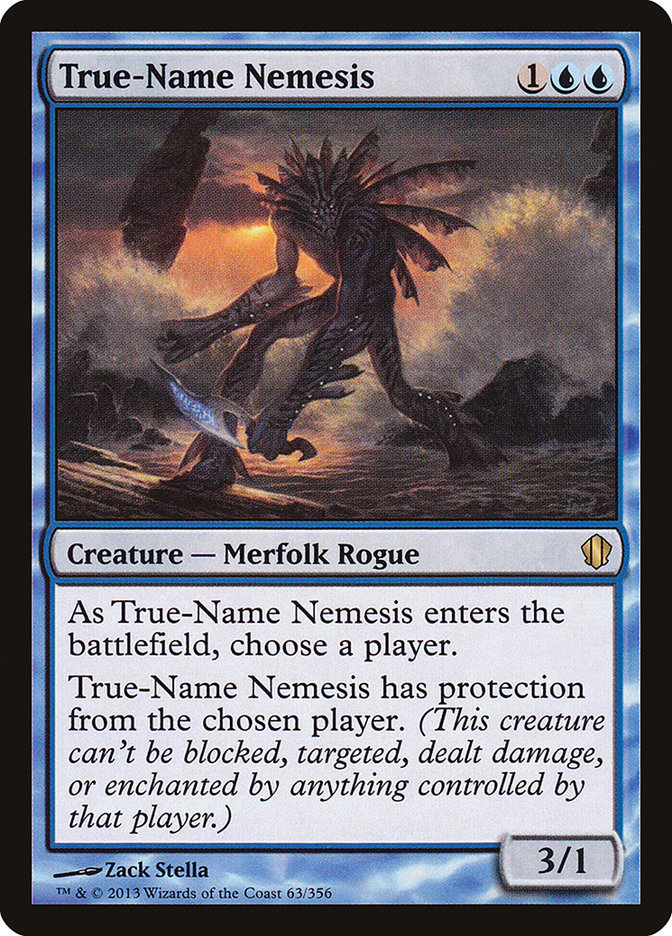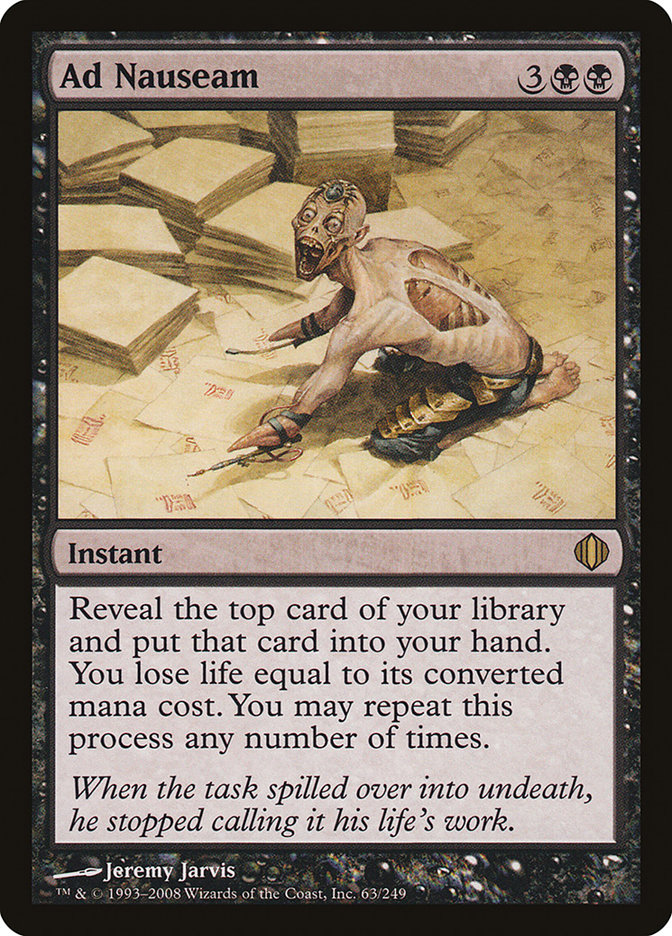With the SCG Tour stop in Baltimore coming up this weekend showcasing Legacy, it’s time to catch up with the format. For those who may have drifted out of touch with Legacy, the last year or two has been fairly eventful for the format as new sets have offered up extremely powerful challengers to the status quo.
1. After the whole Dig through Time and Treasure Cruise mess was cleaned up, it was clear that Miracles was the dominant deck. It probably would have been the best thing to be doing regardless of new printings, but Monastery Mentor gave it an easy button. Even the previous nightmare matchup of TwelvePost was something an early Mentor could easily steal.
2. As a backlash, there was a huge shift towards Abrupt Decay decks. It didn’t really matter and Miracles still won a lot because Sensei’s Divining Top is better than the entire deck, but Four-Color Delver was born in this era.
3. As a backlash to the backlash, Lands started winning. The Miracles matchup was close, but anything with Bayou was a joke.
4. Oath of the Gatewatch broke Modern and shook Legacy with Thought-Knot Seer. After a week or two to get its bearings, Miracles still won a lot and Eldrazi became just another deck in the rotation.
5. Conspiracy: Take the Crown brought Sanctum Prelate and Recruiter of the Guard, which pushed hard into Miracles. Death and Taxes was previously a close matchup, and these cards improved it against both Miracles and everything else. Recruiter of the Guard as a budget Imperial Recuiter and a previous Top 8 at Grand Prix Seattle last November also pushed Aluren out of fringe status, which again is a matchup that has lots of tools to fight Miracles.
Through all of this, one player has been having consistent success with multiple decks: Jarvis Yu.
Remember when I said Lands started winning? That was Jarvis winning #GPSEATAC a year ago. And then again post-Eldrazi crushing that deck to another Top 8 finish at #GPCOL in June. Jarvis is a Gold Pro now qualified for the entire 2016-2017 season testing with Team East-West Bowl, and almost half of that is from his finishes and Pro Tour invites with Rishadan Port and Thespian’s Stage.
Recently, he has changed his tune to Delver of Secrets and Deathrite Shaman, mainly at the poking and prodding of Delver enthusiast Ben Friedman. Since then he has a Top 8 at the Richmond Legacy Classic in September, a finals appearance at a high-profile DC-area Black Lotus tournament, and a Top 8 at Legacy Champs this last weekend.
My experience with Legacy decks has mostly been via linear Brainstorm decks, which Lands and Delver fall well outside of. I took some time to pick Jarvis’s brain about the specifics of the decks he played, why he swapped between the two, and where he sees the format going from here.
Ari: Legacy is typecast as the Brainstorm format, and in my experience a big part of changing decks is translating your cantrip skills. With Lands, you get none of that. What are some of the skills/decisions that you have to make with the deck that drastically differ from the normal blue Magic of Legacy?
Jarvis: Your opening hand is more important. Gamble and Crop Rotation somewhat alleviate this but there’s not a reliable way to find a key early card like Mox Diamond or Exploration. Gamble in particular is a very mathematical skill-testing card. Sometimes you want to jam it early; sometimes you want to pad your hand with Life from the Loam and protect your tutor target.
Ari: Mind elaborating on some of the spots where you have to balance your odds with Gamble?
Jarvis: If you’re casting Gamble for Exploration or Mababond, you need to figure out how bad it is for you to discard and make an evaluation based on that. In faster matchups, you need to Gamble earlier, but against Miracles, if you wait too long, there’s a reasonable chance it gets Counterbalanced out.
Ari: There is a built-in game mechanic for finding these cards: mulligans. How aggressive are the mulligans with Lands, and how much does your “required hand quality” drop with each lost card?
Jarvis: Lands relies on a few specific cards to operate fast enough for the Legacy format. I try to mulligan to a hand that has an accelerant alongside disruption (Wasteland, Rishadan Port) or Life from the Loam. Lost cards can be replaced with Life from the Loam and some of you best hands only require four or five cards to kill them on turn three, so the second and sometimes even third mulligan doesn’t faze me.
Ari: While Dark Depths has spliced some combo into the deck, Lands is still the prison deck it was back in the 43Land days. Historically those archetypes have been very matchup-dependent in terms of knowing what cards and actions you need to take. How much does knowing each specific matchup matter, and how much does knowing your opponent’s deck pre-match matter in mulligan decisions?
Jarvis: This is probably the most valuable thing that playtesting can teach you. If you don’t understand what you need to do versus Miracles, you can almost never win. You will not properly manage their white sources with Ghost Quarter and Rishadan Port to protect a Dark Depths, or won’t know when to move under threat of them finding an answer or Counterbalance lock. The same applies versus other grindy decks that have a lot of removal, where firing an early Marit Lage is risky and you need to account for Deathrite Shaman in establishing a Wasteland lock, or even versus something like Burn where you actually have to establish a Glacial Chasm lock if you have a slow hand.
Knowing my opponent’s deck beforehand affects my mulligan decisions to some degree; for example, I lean towards Wasteland as my disruption against Delver to build into The Tabernacle at Pendrell Vale as a Wrath. But with so many tutor effects, you can often turn any hand into the cards you need, and it isn’t like an early flood of Wastelands and Rishadan Ports or a turn 2 Marit Lage is terrible against most things.
Ari: Even with these generic good plans, Prison decks tend to be fairly metagame-specific. When is Lands at its best and worst, and what made you swap to Delver?
Jarvis: Lands is at its best when the metagame is all grindy fair decks like it was around Grand Prix Seattle-Tacoma last winter: Sultai, Jund, Delver, etc. Lands is at its worst when you see a lot of cards like Blood Moon, Surgical Extraction, Rest in Peace, or Pithing Needle. Basically, when the cheap disruption doesn’t interact with your deck, you are great, but when people have the elements that do interact on your axes, the deck gets much worse. A lot of people have actually decided to sideboard enough cards to defeat Lands, especially with bonus value on Blood Moon against some of the more strained mana and Eldrazi and with Pithing Needle taking out Sensei’s Divining Top.
In addition, the printing of Sanctum Prelate for Death and Taxes turned a matchup that was fairly positive to fairly negative in Game 1. Setting a Sanctum Prelate on two shuts down the some of the most important cards: Punishing Fire and Life from the Loam. (Ari Aside: As someone with D&T experience, Punishing Fire was borderline unbeatable and your only way to stop it was Wastelanding Grove of the Burnwillows, which Life from the Loam prevents.)
The major reason I switched is that Delver is far less exploitable as a deck. In particular, the version Ben Friedman decided to build is similar to Shardless Sultai decks that can grind well, except it also has a slightly leaner gameplan of “Delver and disrupt with soft counters.”
Creatures (15)
Lands (19)
Spells (26)

Ari: The statement about Shardless aspects creeping into Delver is interesting to me. Sure, Abrupt Decay is a B/G core card, but the cards I traditionally associate with the Shardless gameplan are the card advantage (Hymn to Tourach, Ancestral Vision) or planeswalkers (Liliana of the Veil; Jace, the Mind Sculptor). How is taking a less aggressive role different without those effects?
Jarvis: You still have a lot of tools that do the similar thing, just in proactive ways. You just have a lot of cards that don’t suck past turn 1 or 2 (Ari Aside: or the equivalent mana-deprived scenarios Temur Delver tended to force going later).
Snapcaster Mage is the big one, and to me is the card that distinguishes this Delver variant from all others. We haven’t seen it a lot in Legacy, which is somewhat shocking to me given that all of the Delver decks in Standard always played four Snapcaster Mage and it was always one of the best cards. Your other non-Delver creature threats also play to this. Deathrite Shaman does a ton of work as always and True-Name Nemesis plays defense and later-game offense.
(Ari Aside: This actually lines up exactly with how Modern Grixis Delver plays out. Snapcaster Mage is how you pull ahead against all sorts of creature decks where leveraging your removal is a route to victory, while against combo you sneak in a cheap Delver of Secrets or delve threat and ride tempo to victory. This is pretty funny, as this is the second time in the last year a strategy popularized in Modern has started porting backwards into Legacy, with the first being Eldrazi.)
The card that has been excluded from this list is Young Pyromancer. It is an extremely powerful card precisely on turn 2 or 3 but is very poor in topdeck wars.
Ari: What’s next for the format? How hard does Sanctum Prelate push things?
Jarvis: Sanctum Prelate forces every deck to adapt and is definitely a game-changer.
For instance, a deck like Storm (or any combo deck, really) already had problems with Thalia, Guardian of Thraben, but the combination of Thalia and Prelate in Game 1 probably seals the deal. Prelate also forces decks like Lands to adapt. Just having four Punishing Fire will lead to you losing to Prelate more often than not, hence the addition of cards like Molten Vortex.
(Ari Aside: Did your deck have any Meddling Mage issues? What about Chalice of the Void? Sanctum Prelate is like these cards times a million as it is far less specific. Seeing which combo decks evolve to split their threats’ mana costs is going to be interesting. This is especially true as Sneak and Show is the default split-cost combo deck but is drawing dead to all the other cards in Death and Taxes.)
Ari: I know I’m off to play Modern in Dallas next weekend, but can we expect you to be taking down opponents at what is basically a hometown event at the SCG Tour stop in Baltimore?
Jarvis: Yup. I’ll definitely be changing it up a little, though. I tested my Top 8 matchup Saturday night against Chris Andersen and we split games literally 50/50. I’m adding at least another Sulfur Elemental to push that in the right direction and will try out a few other things over the next week. Four-Color Delver is definitely capable of adapting, and with all the options available to it, I don’t expect it be going anywhere soon.
Jarvis can be reached @jkyu06 on Twitter if you have more questions about Legacy or Magic in general. You can also find him at most North American Grand Prix or various DC area events wearing a green Dartmouth polo and (if he remembered it) his red Team East-West Bowl hoodie.


